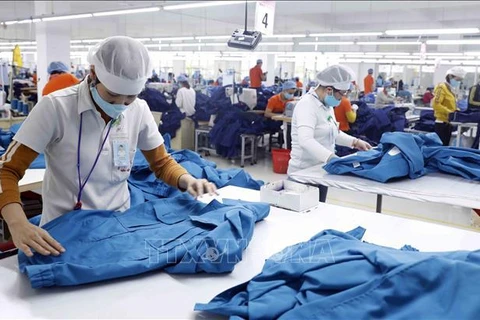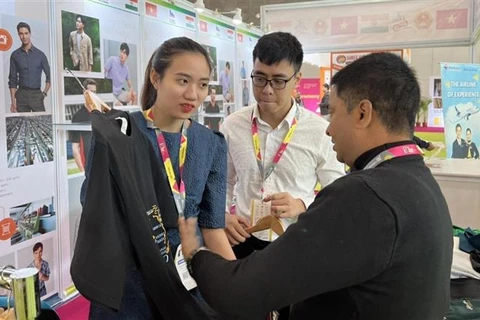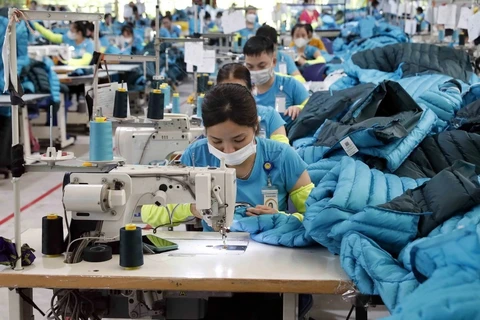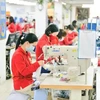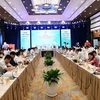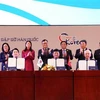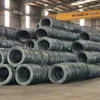
Hanoi (VNA) – Vietnamese garment and textile enterprises are actively developing their brands, with many of them building strategies to expand their reach to the global market.
In recent years, Vietnamese garment and textile enterprises have focused on developing brands. This direction not only creates higher value for exports, but also establishes a strong position in the domestic market.
Recently, the Garment 10 Corporation JSC has introduced two product lines to the market under the brands Generos and DeTheia to meet consumer demand. Generos targets the younger cconsumer segment, while DeTheia is designed for women.
For many years, the corporation has continuously invested in design and introduced numerous fashion products with diverse styles, materials and designs following the trends of both Vietnamese and international fashion. Products such as the Eternity GrusZ series, May10 M series, and ECO are some of the new products embodying distinctive characteristics, and being closely associated with nature.
According to General Director of the Garment 10 Corporation JSC Than Duc Viet, the enterprise has its own collections to meet all customer demand. With a workforce of 12,000 employees, including over 300 designers, sample development teams, and market development divisions, the enterprise is poised to achieve its goal of increasing the Original Design Manufacturing (ODM) ratio alongside the FOB (Free on Board) ratio.

Similarly, the Viet Tien Garment JSC has gradually affirmed its reputation and position in the market with famous brands such as Viettien, Viettien Smartcasual San Sciaro, Manhattan, T-up, Vietlong, Camellia, among others.
Bui Van Tien, General Director of the Viet Tien Garment JSC, said the company aims to continue increasing its presence in the domestic market, and targeting to account for 10-15% of the country’s total export value of garments and textiles by 2030, with an export turnover reaching 1.2 – 1.4 billion USD.
Chairman of the Vietnam Textile and Apparel Association (VITAS) Vu Duc Giang said a population of 100 million people, the domestic market is being targeted by enterprises by changing and applying various methods to design product samples, and promote brands to conquer the market.
VITAS will continue to stand by businesses, and coordinate with international organisations to implement programmes to support businesses in management, green transition, applying new technologies, and brand building in order to foster goods production and market development, Giang said.

Currently, Vietnam is among the top garment and textile exporters in the world. Proactively sourcing raw materials and enhancing the design will undoubtedly add higher value for the sector.
Chairman of the Board of Directors of the Vietnam National Textile and Garment Group (Vinatex) Le Tien Truong said it is necessary to focus on developing domestic raw material sources. The industries needs to follow green and circular economy trends, meeting stricter standards regarding origin, as well as additional taxes that may be applied in the future such as ERP (Extended Producer Responsibility) and CBAM (Carbon Border Adjustment Mechanism).
According to Truong, domestic fabric production capacity meets only 36% of the demand, while imported fabric accounts for 64% of the market share. Therefore, Vietnam needs a systematic strategy to diversify its supply sources of materials for production to ensure the sustainability of the textile and garment supply chain./.
